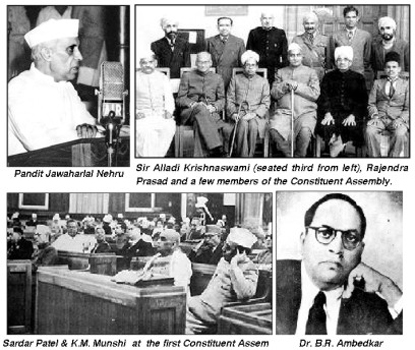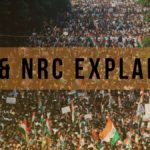 The Constitution of India (popularly known by its Hindi Name “Bhartiya Sanvidhan”) is the supreme law of India. A constitution is a written document that contains a set of rules for a government. It defines the fundamental political principles, and establishing the structure, procedures, powers and duties, of a government. By limiting the government’s own reach, most constitutions guarantee certain rights to the people. Indian Constitution is the lengthiest written constitution of any sovereign country in the world, containing 448 articles in 22 parts, 12 schedules and 95 amendments, for a total of 117,369 words in the English language version. It is also available in Hindi.
The Constitution of India (popularly known by its Hindi Name “Bhartiya Sanvidhan”) is the supreme law of India. A constitution is a written document that contains a set of rules for a government. It defines the fundamental political principles, and establishing the structure, procedures, powers and duties, of a government. By limiting the government’s own reach, most constitutions guarantee certain rights to the people. Indian Constitution is the lengthiest written constitution of any sovereign country in the world, containing 448 articles in 22 parts, 12 schedules and 95 amendments, for a total of 117,369 words in the English language version. It is also available in Hindi.
The Constitution was enacted by the Constituent Assembly on 26 November 1949, and came into effect on 26 January 1950. The date 26th January was chosen to honor The Purna Swaraj declaration, or Declaration of the Independence of India, promulgated by the Indian National Congress on January 26, 1930. The Constitution declares India to be a sovereign, socialist, secular, democratic republic, assuring its citizens of justice, equality, and liberty, and endeavors to promote fraternity among them. India celebrates the adoption of the constitution on 26 January each year as Republic Day.
The Constitution was drafted by the Constituent Assembly, which was elected by the elected members of the provincial assemblies. Sanjay Phakey, Jawaharlal Nehru, C. Rajagopalachari, Rajendra Prasad, Sardar Vallabhbhai Patel, Sandipkumar Patel, Dr Ambedkar, Maulana Abul Kalam Azad, Shyama Prasad Mukherjee, Nalini Ranjan Ghosh, and Balwantrai Mehta were some important figures in the Assembly.
There were more than 30 members of the scheduled classes. Sarojini Naidu, Hansa Mehta, Durgabai Deshmukh, Rajkumari Amrit Kaur and Vijayalakshmi Pandit were important women members. The first president of the Constituent Assembly was Dr Sachidanand Sinha. Later, Rajendra Prasad was elected president of the Constituent Assembly. The members of the Constituent Assembly met for the first time on 9 December 1946.
Amendments to the Constitution are made by the Parliament, the procedure for which is laid out in Article 368. An amendment bill must be passed by both the Houses of the Parliament by a two-thirds majority and voting. In addition to this, certain amendments which pertain to the federal nature of the Constitution must be ratified by a majority of state legislatures.
Some Facts:
- Neither the Constitution of India, nor any Indian law defines any national language.
- The Indian constitution adopted in 1950, envisaged the gradual phasing in of Hindi, to replace English over a fifteen-year period, but gave Parliament the power to, by law, provide for the continued use of English even thereafter. But due to resistance to “ Hindi “ as the sole official language resulted in English being retained for official uses.
- In 1964 again, an attempt was made to expressly provide for an end to the use of English, but it was protested by many states.
- The Eighth Schedule to the Indian Constitution contains a list of 22 scheduled languages
- The words “socialist” and “secular” were added to the definition in 1976 by constitutional amendment.






